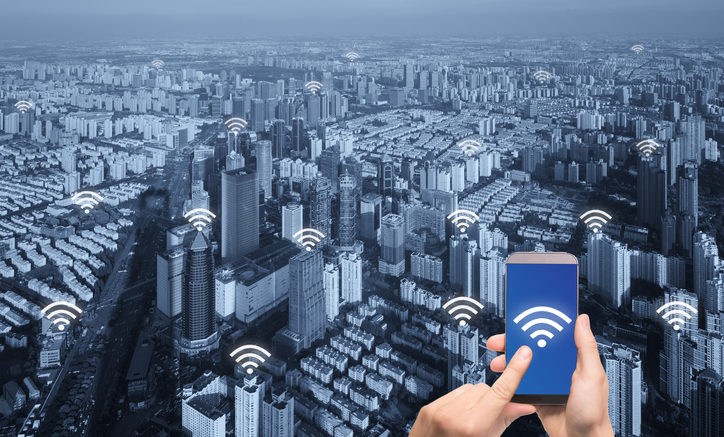Since carriers like AT&T reintroduced unlimited plans, there’s been a low-key battle raging. Should you connect your phone to Wi-Fi or use your phone’s cellular connection? This has become even more of a pitched battle now that AT&T has rolled out its super-fast 5G network. Let’s take a look at the plusses and minuses of doing either.
Wi-Fi
PLUS: The connection is more reliable in the home
Unfortunately, there are still a lot of cases where people don’t get good cell service indoors. Don’t blame the carriers. The real culprit is the construction industry. Cell phone signals are blocked by things like stucco mesh, aluminum studs, flex conduit, and large appliances. You could get a cellular signal booster to fix this if you’d like. Sadly about 95% of people don’t do this, leading to dead spots in the home.
PLUS: Control smart devices more easily (print, too)
There are a lot of smart devices that only work at home, or work differently if your device isn’t on the same network as your appliance. For example, you can probably get an app to control your TV, but you have to be on the same network. You may need to be at your “home” location to get certain other details of your security system as well. These things are put in for your protection. Connecting to your home network means connecting directly to these devices.
If you’re the sort of person who still has a working printer and still uses it, you’ll need to connect to its network in order to print from your device, assuming that’s supported by your printer.
PLUS: Better security controls
Assuming you’ve set everything up correctly, your Wi-Fi network should be more secure than the cellular network. The latest Wi-Fi standards, combined with strong passwords and a little bit of work on your end, should keep your home network quite safe. It’s hard to hack a cellular connection but it isn’t impossible.
MINUS: A lot of the setup and maintenance is up to you
Yeah, the cable company will drop off the router, but it’s up to you to get everything connected. And if you want better performance, that’s not just “gonna happen.” You’ll need to upgrade yourself. And most folks don’t relish that idea.
MINUS: Wi-Fi has dead spots too
Your typical home router doesn’t have enough power to cover the typical home. You can set up a mesh system, which is easy enough, but again you’re the one doing the job. That’s good if you’re particular about what you want, but it’s not good if you aren’t technologically inclined.
MINUS: Guest network headaches
If you rely on your own Wi-Fi for networking, you’re all set personally, But, when guests come over you have to either give them the password or set up a guest network for them. The guest network can have an easier-to-remember password, but that makes it more hackable too.
5G
PLUS: Easy-peasy
Walk in the house, walk out of the house, it’s the same cellular connection. You don’t have to think about it. Using 5G instead of Wi-Fi means no additional connections as you walk in. There’s no remembering passwords, no worries about your equipment going down, none of that.
PLUS: Faster speeds
In general, 5G is faster than home Wi-Fi. Even if your internet provider promises 500 megabit speeds, they aren’t really delivering it. Your home network speeds are probably a lot lower than that, and your whole home shares the same connection.
On the other hand, 5G is fast and plentiful. Each phone gets its own high speed connection that doesn’t depend on what others in the home are doing.
PLUS: Bragging rights
5G carries quite a bit of cachet right now. If bragging rights are your thing, consider making the jump to 5G. Your friends will be amazed when you download an entire movie in about a minute.
MINUS: Slowdowns
Depending on your carrier, you may experience slower data rates toward the end of your billing cycle. Some 5G plans will throttle speeds if you use too much data. This is better than having a hard data cap but it can be an issue if you use a lot of data every month.
MINUS: Streaming video quality
A lot of carriers use some sort of “bandwidth shaping” to limit the quality of the video you see on the phone’s screen. It can be reduced to standard-definition or less even if you are supposedly watching a 4K video. The carriers think you won’t notice (and most of the time they’re right.) But, if you’re counting on casting a 5G connection to your television, you might be surprised how poor it looks.
MINUS: The other stuff in your home
I don’t think most folks are at the point yet where they can get rid of home internet. There are still other devices in the home that need it, including traditional computer setups, smart home products, and smart TVs. So you’re paying for this thing, and you’re talking about not using it. That kind of stinks.
The decision is up to you
The best news here is that there’s no wrong answer. Use your devices your way. Whatever you decide, shop at Solid Signal to get the best accessories for both cellular and Wi-Fi networking!





